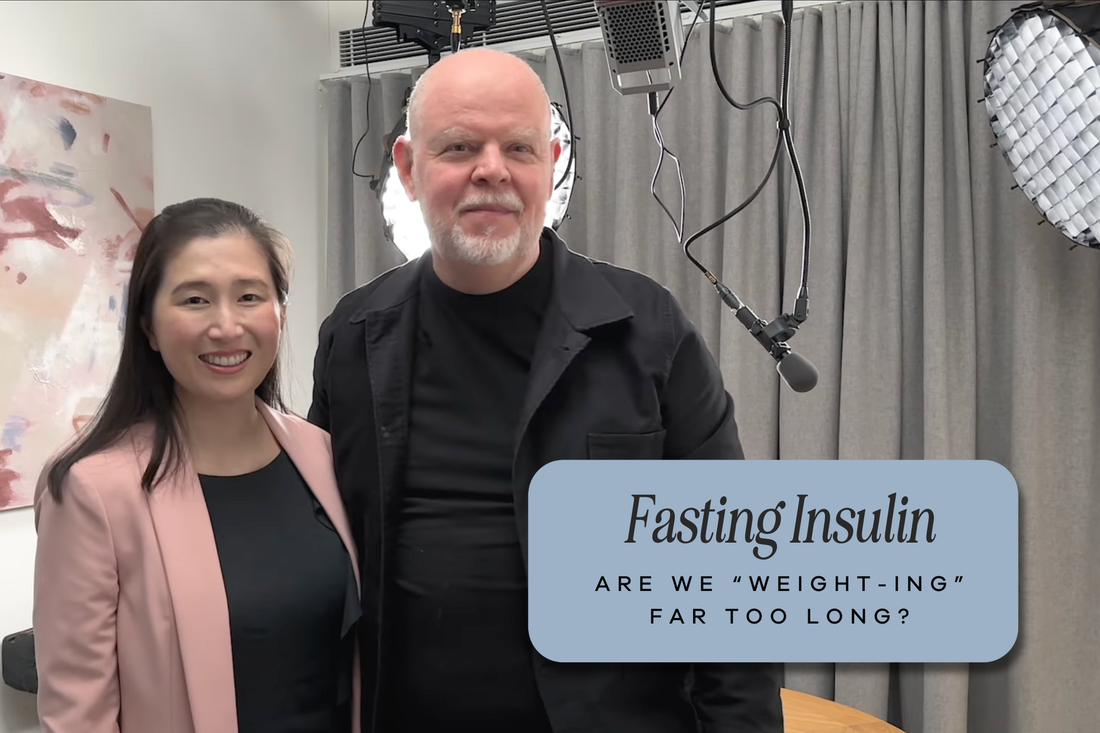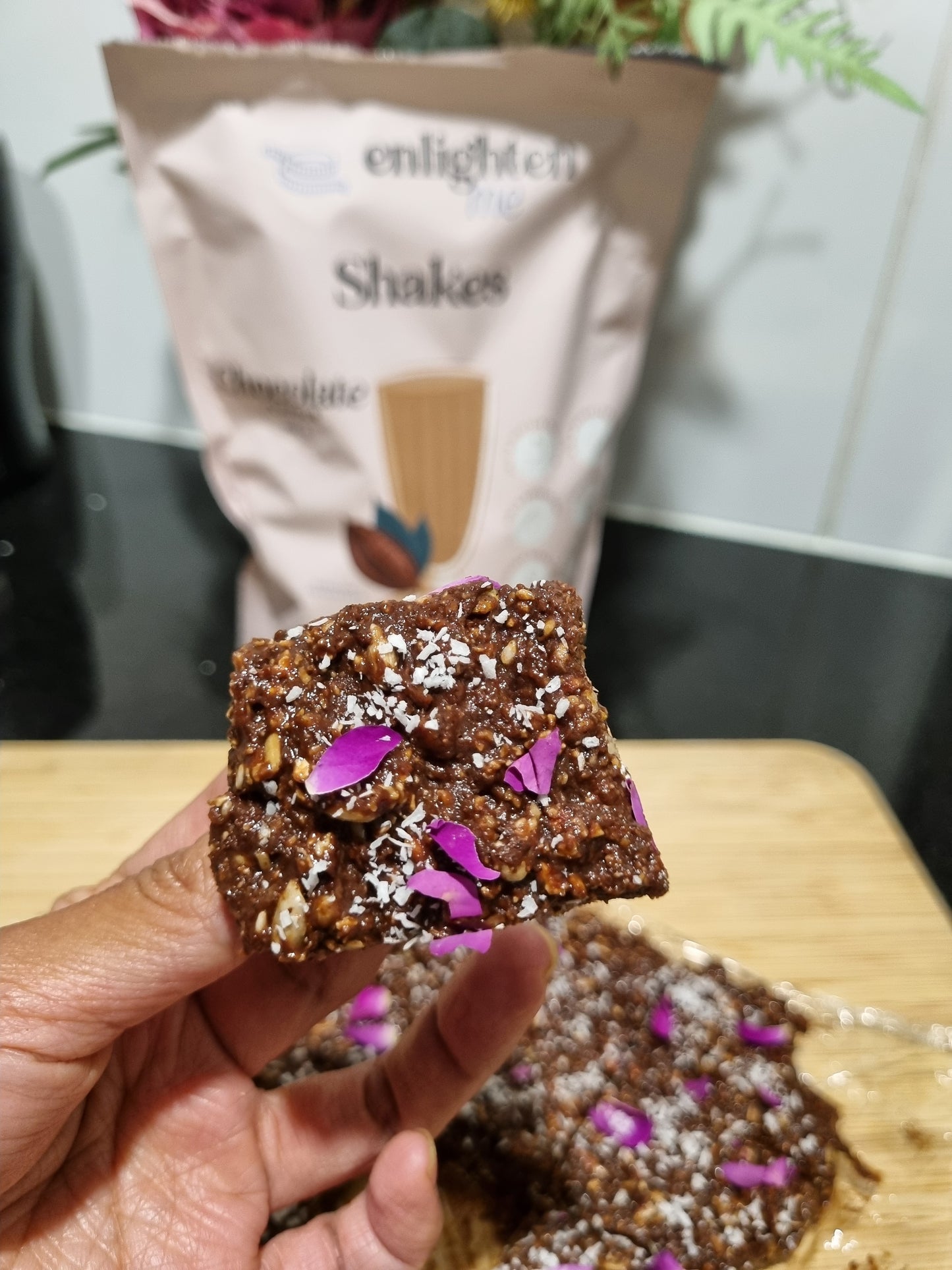
Fasting Insulin: Are We “Weight-ing” Far Too Long
Share
For many people, the first time they hear the phrase fasting insulin is long after they’ve noticed subtle but puzzling changes - weight that shifts shape, energy that dips more easily, or cravings that no longer make sense. They’ve been doing all the right things - eating well, moving more, trying harder - yet something still feels off.
And so they wonder:
“What changed in my body - and why didn’t anyone tell me earlier?”
The answer isn’t a lack of effort. It’s that most of us were never taught to recognise the body’s earlier whispers of change.
Why Fasting Insulin Is Entering the Conversation
For decades, the main markers used in health checks - fasting glucose and HbA1c - have focused on diagnosing disease, not detecting strain. By the time these numbers shift, the body has often been working overtime for years to keep things balanced.
Fasting insulin gives us a glimpse into that earlier stage - the quiet period when the body is compensating beautifully, just not effortlessly.
It doesn’t mean everyone should test for it. Rather, it’s an invitation to broaden the conversation - to understand that our metabolism has an early, adaptable phase where gentle adjustments can make a meaningful difference.
The Spectrum We Don’t See
We often talk about diabetes as something that happens suddenly. But biologically, it’s a spectrum.
Long before glucose rises, insulin may climb in the background - silently keeping blood sugar normal. This can go on for years, even decades, before traditional tests flag concern.
That’s why someone might say,
“I’ve always been healthy - and suddenly I have diabetes.”
It wasn’t sudden.
It was simply unseen.
Recognising this spectrum doesn’t mean seeking more tests. It means valuing early understanding - seeing the body’s effort as communication, not failure.
When the Body Starts Whispering
Before any numbers change, many people begin to feel subtle shifts:
- Weight settling around the waist
- A plateau that doesn’t match the effort
- Cravings that feel louder or harder to manage
- Fatigue that lingers despite good habits
- Shorter gaps between meals before energy dips
Because standard tests often come back “normal,” people blame themselves - assuming they’re just getting older or less disciplined. But often, it’s physiology quietly asking for a different kind of support.
Beyond Blood Tests: What Else Tells the Story
Some of the most telling clues of early metabolic change don’t come from the lab.
A tape measure can reveal more than a scale - showing changes in visceral fat, the deeper fat around the organs that plays a key role in insulin sensitivity. Two people can have the same weight yet very different metabolic profiles depending on where that weight sits.
Equally, mental health and metabolic health often move together. Stress, poor sleep, emotional eating and low mood can each influence insulin - and be influenced by it in return.
This isn’t cause and effect so much as conversation. The mind and body talk to each other constantly; fasting insulin is simply one of their quieter exchanges.
Why Midlife Brings It Into Focus
Midlife is when this conversation tends to become louder. What worked easily before suddenly doesn’t. The body feels different - not broken, just less forgiving.
That’s because several biological changes converge:
- Gradual loss of muscle reduces how efficiently we use glucose
- Hormonal transition increases visceral fat storage
- Chronic stress and disrupted sleep elevate cortisol and appetite
- Years of subtle strain finally make themselves known
The body hasn’t failed - it has simply reached the point where its quiet work is now visible.
This is why we emphasise muscle preservation and protein support at Enlighten Me - not as a quick fix, but as a long-term investment in metabolic ease.
What This Means (and Doesn’t Mean)
Fasting insulin isn’t a magic marker, and it’s not something everyone needs to test. Its value lies in what it represents - an earlier window of awareness that reminds us prevention doesn’t start at diagnosis.
Learning about fasting insulin doesn’t mean adding something to your to-do list. It means thinking differently about how the body communicates and how we respond.
Curiosity, not urgency, is the goal.
A Gentle Reframe
When we understand that energy changes, weight shifts and hunger fluctuations can reflect physiology - not failure - something powerful happens: self-blame begins to loosen.
Metabolic health becomes less about control and more about connection.
And that shift, more than any test, is where lasting change begins.
A Closing Reflection
Fasting insulin isn’t a trend. It’s a quiet lens that helps us see the body’s hidden effort - the early stage where understanding and small shifts make the biggest difference.
When paired with waist circumference and honest conversations about stress, hormones and mental health, it offers a more complete and compassionate picture of wellbeing.
We do better - not by working harder - but by seeing sooner.
Continue the Conversation
Listen to Dr. Angela Kwong's conversation with Padraig O'Sullivan on the Don't Let The Old Man In Podcast below. Together, they unpack fasting insulin, midlife change and how to approach weight management with curiosity and care.











